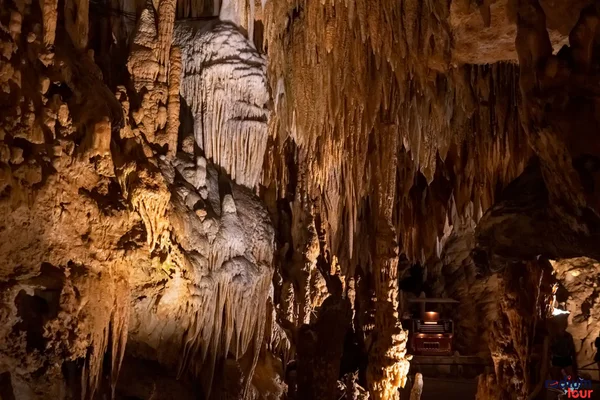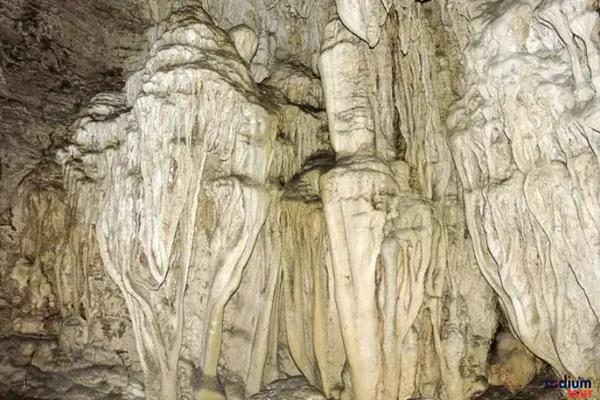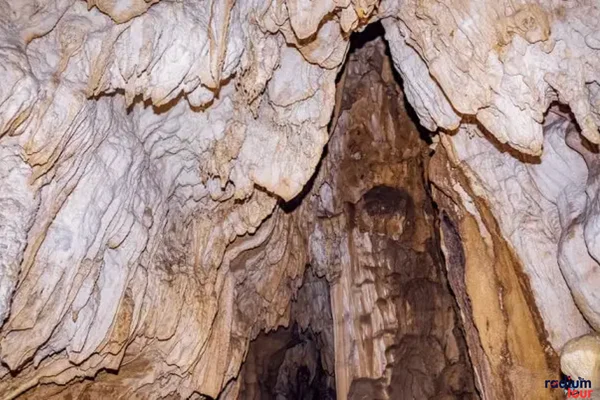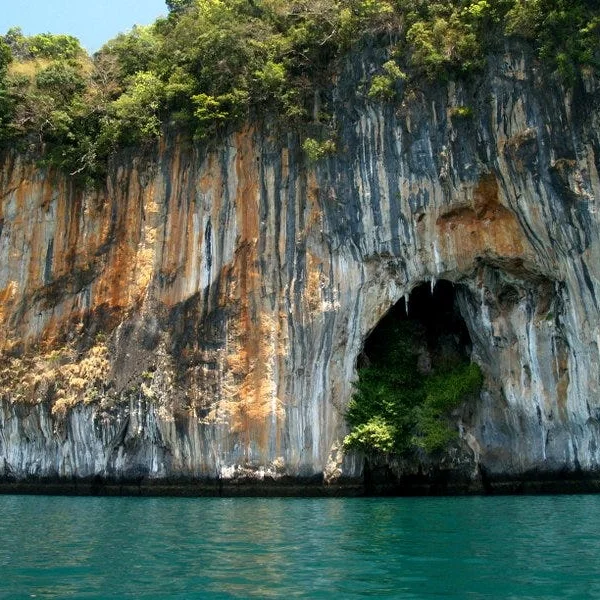Limestone Caves
The Limestone Caves: A Subterranean Marvel
As you step into the cavern’s embrace, darkness surrounds you, awaiting the touch of your flashlight. Suddenly, a surreal world unfolds before your eyes. The Limestone Caves, shaped by centuries of relentless erosion from CO2 dissolved water, stand as a testament to nature’s artistry.
These formations, suspended from the ceiling and rising from the ground, evoke a sense of wonder. Intricate and captivating, they bear witness to the patient work of time. Over the years, as erosion continues its silent dance, the shapes evolve, ensuring each visit offers a unique experience.
Navigating these caves demands sturdy footwear; comfort is key, as the journey is no easy feat. The path to this underground marvel is a testament to the wonders that await. For those accustomed to leisurely beach days, this adventure might not be your cup of tea.

The Limestone Caves beckon, a hidden world of sculpted stone and ancient secrets. It’s a realm where nature’s hand has carved intricate forms, an ever-changing masterpiece sculpted by time’s touch. As you traverse the darkened passages, the play of light reveals the artistry that has unfolded over centuries.
Every twist and turn unveils a new wonder, a testament to the incredible forces that shaped this subterranean wonderland. From delicate stalactites to stalagmites reaching for the heavens, the cave’s interior is a gallery of natural wonders. It’s a place where imagination meets reality, where the earth’s canvas tells a story of eons gone by.
Visiting the Limestone Caves requires determination and a spirit of adventure. The terrain is demanding, calling for proper footwear and a willingness to explore. For those ready to trade beachside relaxation for the thrill of discovery, this is an experience like no other. So, if you’re up for an extraordinary journey into the heart of nature’s artistry, don’t miss the Limestone Caves.
Delve into the History and Wonders of Andaman's Limestone Caves
Prepare to witness a natural marvel, where stalactites and stalagmites coexist in rare harmony. Visitors often find joy in interpreting the myriad shapes within. These caves bear hues of yellow and white, largely untouched by human hands, at least on the upper surfaces. During peak seasons, crowds flock, requiring a moment’s patience to savor this enchanting wonder.
Formation of Limestone Caves: Limestone caves, a testament to the Earth’s artistry, take shape over millions of years beneath the planet’s surface. The earliest known ocean life, cyanobacteria, existed 3.8 billion years ago, engaging in photosynthesis and releasing oxygen. These activities resulted in the creation of dolomitic limestone, a sedimentary rock. Over time, acidic groundwater dissolved parts of the limestone, leaving cavities. Geological movements eventually brought these formations to the surface.
Continued erosion by rainwater, carrying weak carbonic acid, sculpted the limestone into the intricate shapes we witness today.
Structures Within the Caves:
- Speleothem: General term for calcium carbonate deposits.
- Flowstones: These speleothems grace the walls or floor of the cave.
- Stalactite: Derived from the Greek ‘stalaktos,’ meaning “dripping,” these conical formations hang from the cave’s ceiling. They form as water reacts with carbon dioxide, creating carbonic acid that drips and deposits calcium carbonate.
- Stalagmite: From the Greek ‘stalagma,’ meaning “drop,” stalagmites are stalactites in reverse. They rise from the cave floor as mineral-bearing water drips from above.
- Columns: In rare instances, stalactites and stalagmites meet, fusing into a singular, formidable column.
As you explore these time-worn caverns, consider the eons of natural artistry that have shaped this awe-inspiring landscape. The Limestone Caves stand as a testament to the Earth’s enduring creativity, a wonder that will remain long after our time has passed.

How to Reach Limestone Caves?
The journey to the limestone caves commences with a 12km boat ride from Baratang Jetty, followed by a 2km trek.
Upon arrival at Baratang Island, secure your ticket and hop aboard a fiberglass motorboat. Depending on its size, the boat can accommodate 6-8 passengers, occasionally resulting in a short wait.
The 25-minute ride is nothing short of spectacular. Navigating through both wide and narrow waterways flanked by mangroves offers a thrilling experience. At times, the passage is so snug, you may need to crouch to avoid brushing against the trees. It’s an adventure in itself.
The boat docks near a wooden bridge, which marks the starting point of a 2km jungle trek culminating at the limestone caves. Often, your boatman doubles as a tour guide. The return journey follows the same route you embarked on.

Experiencing the Wonders of Limestone Caves
Experience the enchantment of a romantic boat ride amidst the sprawling mangrove forests, forming a natural canopy over the waterway. It’s a truly magical journey! As you meander along, you’ll be led to the breathtaking realm of the Limestone Caves. For photographers and bird enthusiasts, it’s a paradise with exotic creatures that will captivate your senses. The interplay of light and shadows on the water creates mesmerizing patterns. Witnessing sunbeams piercing through the dense foliage is a spellbinding sight. It’s a truly miraculous experience!
Visitor’s Information:
Limestone Cave Andaman Operating Hours:
Monday to Sunday: 6:00 am – 3:00 pm
Limestone Cave Andaman Admission:
No Entry Fee
Embark on a picturesque 20-minute boat journey through captivating mangrove forests to reach the limestone caves. The cost for this experience is Rs. 800 per person.

Frequently Asked Questions.
The journey to Limestone Caves begins with a boat ride from Baratang Jetty, followed by a 2km jungle trek.
The boatman who ferries you to the caves often doubles as a tour guide, providing information about the journey and the caves.
No, there is no entry fee to visit the Limestone Caves.
The boat ride to the caves usually takes around 20 minutes.
The boat ride offers breathtaking views as you pass through wide and narrow waterways flanked by mangrove forests.
